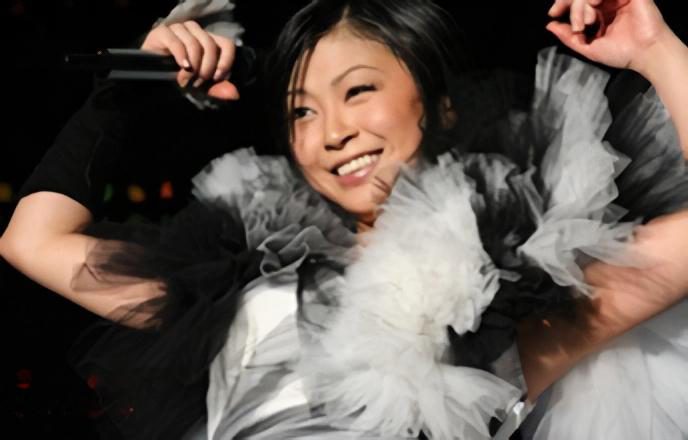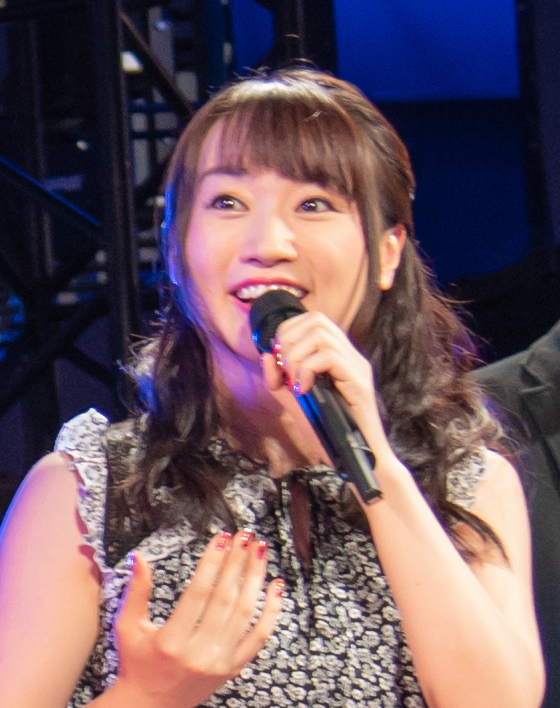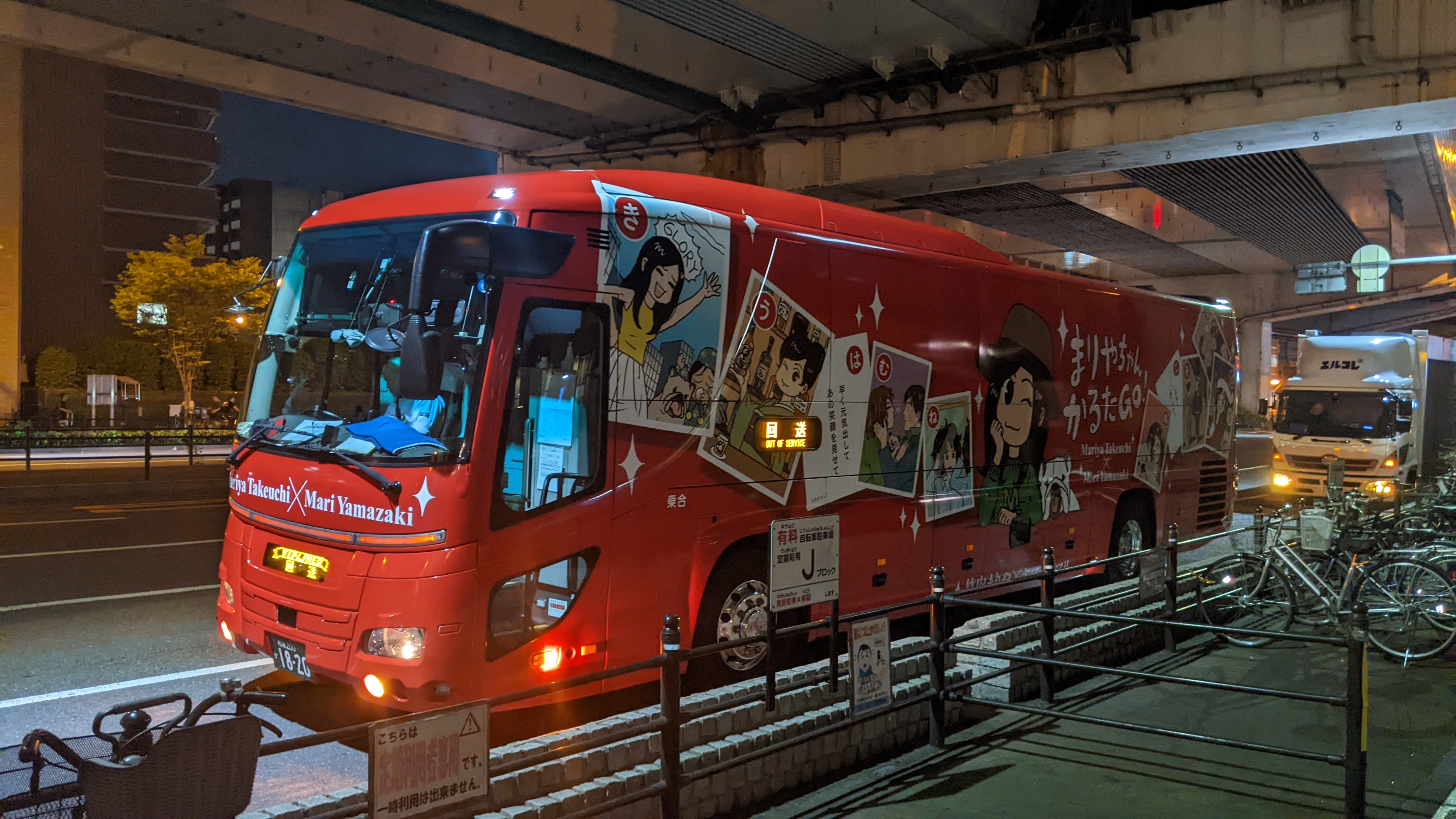|
J-pop
J-pop (often stylized in all caps; an abbreviated form of "Japanese popular music"), natively known simply as , is the name for a form of popular music that entered the musical mainstream of Japan in the 1990s. Modern J-pop has its roots in traditional music of Japan, and significantly in 1960s in music, 1960s pop music, pop and rock music. J-pop replaced ''kayōkyoku'' ("Lyric Singing Music"), a term for Japanese popular music from the 1920s to the 1980s in the Japanese music scene. Japanese rock bands such as Happy End (band), Happy End fused the Beatles and Beach Boys-style rock with Japanese music in the 1960s1970s. J-pop was further defined by New wave music, new wave and Crossover music, crossover Jazz fusion, fusion acts of the late 1970s, such as Yellow Magic Orchestra and Southern All Stars. () Popular styles of Japanese pop music include city pop and technopop during the 1970s1980s, and Eurobeat#J-Euro, J-Euro (such as Namie Amuro) and Shibuya-kei during the 1990s and 2 ... [...More Info...] [...Related Items...] OR: [Wikipedia] [Google] [Baidu] |
Kayōkyoku
is a Japanese pop music genre, which became a base of modern J-pop. ''The Japan Times'' described ''kayōkyoku'' as "standard Japanese pop" or "Shōwa period, Shōwa-era pop". ''Kayōkyoku'' represents a blend of Western and Japanese musical scales. Music in this genre is extremely varied as a result. ''Kayōkyoku'' in the narrower and more practical sense, however, excludes J-pop and ''enka''. Unlike "J-pop" singers such as Southern All Stars' Keisuke Kuwata, the singers of the ''kayōkyoku'' genre do not use stylized pronunciations based on the English language, but prefer traditional Japanese. There are exceptions, such as in singer Momoe Yamaguchi's song "Rock 'n' Roll Widow". Unlike ''enka'', ''kayōkyoku'' is also not based on emotional displays of effort while singing. Famous ''kayōkyoku'' artists include Hiroko Yakushimaru, Kyu Sakamoto, the Peanuts, The Tigers (Japanese band), the Tigers, Candies (group), Candies, Pink Lady (duo), Pink Lady, Seiko Matsuda, Junko Sak ... [...More Info...] [...Related Items...] OR: [Wikipedia] [Google] [Baidu] |
Music Of Japan
In Japan, music includes a wide array of distinct genres, both traditional and modern.ref> The word for "music" in Japanese is 音楽 (''ongaku''), combining the kanji 音 ''on'' (sound) with the kanji 楽 ''gaku'' (music, comfort). Japan is the world's largest market for music on physical media and the second-largest overall music market, with a retail value of US$2.7 billion in 2017. Traditional and folk music Gagaku, hougaku The oldest forms of traditional Japanese music are: * , or Buddhist chanting * , or orchestral court music both of which date to the Nara (710–794) and Heian (794–1185) periods. Gagaku classical music has been performed at the Imperial court since the Heian period. Kagura-uta (神楽歌), Azuma-asobi (東遊) and Yamato-uta (大和歌) are indigenous repertories. Tōgaku (唐楽) allegedly resembles a Chinese Tang dynasty (618–907) style; komagaku may have come from the Korean Peninsula. In addition, gagaku subdivides into kangen (管弦) ... [...More Info...] [...Related Items...] OR: [Wikipedia] [Google] [Baidu] |
Eurobeat
Eurobeat refers to two styles of dance music that originated in Europe: one is a British variant of Italian Eurodisco-influencedAng, Ien & Morley, David (2005). "Cultural Studies: Volume 3, Issue 2". ''Routledge''. pgs. 171, 173, 170. . "Eurorecords had to have immediate cross-national appeal, musical simplicity was of the essence- a bouncy beat, just one chorus hook, elementary lyrics. The fun of these records was entirely a matter of sound quality, but once a record was a hit it took on a kind of sleazy, nostalgic charm of its own. It was precisely the brazen utility of these records, in short, that gave them gay disco consumer appeal too. ..Eurodisco also had an obvious element of camp -British club audiences took delight in the very gap between the grand gestures of Eurosingers and the vacuity of their songs." dance-pop, and the other is a hi-NRG-driven form of Italo disco. Both forms were developed in the 1980s. Producer trio Stock Aitken Waterman and pop band Dead or Alive ... [...More Info...] [...Related Items...] OR: [Wikipedia] [Google] [Baidu] |
Kawaii Metal
Kawaii metal (also known as cute metal, J-pop metal, or kawaiicore) is a musical genre that blends elements of heavy metal and J-pop that was pioneered in Japan in the early 2010s. The genre combines both Eastern and Western influences that appeal to both cultures. A typical kawaii metal composition combines the instrumentation found in various types of heavy metal music with J-pop melodies and a Japanese idol aesthetic. Kawaii metal's lyrical topics often contain kawaii (cute, lovable, kidlike) themes. The Japanese girl group Babymetal is often credited with the creation and success of kawaii metal. History and characteristics Japanese heavy metal idol group Babymetal are considered the inventors of the kawaii metal genre. The concept of kawaii metal started with Key “Kobametal” Kobayashi, the producer behind the group Babymetal. In an interview conducted by Billboard, Kobayashi explains that he was “just trying to do something no one had heard before”. Kawaii met ... [...More Info...] [...Related Items...] OR: [Wikipedia] [Google] [Baidu] |
Shibuya-kei
is a microgenre of pop music or a general aesthetic that flourished in Japan in the mid-to-late 1990s. The music genre is distinguished by a "cut-and-paste" approach that was inspired by the kitsch, fusion, and artifice from certain music styles of the past. The most common reference points were 1960s culture and Western pop music, especially the work of Burt Bacharach, Brian Wilson, Phil Spector, and Serge Gainsbourg. Shibuya-kei first emerged as retail music from the Shibuya district of Tokyo. Flipper's Guitar, a duo led by Kenji Ozawa and Keigo Oyamada (Cornelius), formed the bedrock of the genre and influenced all of its groups, but the most prominent Shibuya-kei band was Pizzicato Five, who fused mainstream J-pop with a mix of jazz, soul, and lounge influences. Shibuya-kei peaked in the late 1990s and declined after its principal players began moving into other music styles. Overseas, fans of Shibuya-kei were typically indie pop enthusiasts, partly because many Shibu ... [...More Info...] [...Related Items...] OR: [Wikipedia] [Google] [Baidu] |
Japanese Idol
An is a type of entertainer marketed for image, attractiveness, and personality in Japanese popular culture, Japanese pop culture. Idols are primarily singers with training in other performance skills such as acting, dancing, and modeling. Idols are commercialized through merchandise and endorsements by Talent agent, talent agencies, while maintaining a parasocial relationship with a financially loyal consumer fan base. Japan's idol industry first emerged in the 1960s and became prominent in the 1970s and 1980s due to television. During the 1980s, regarded as the "Golden Age of Idols", idols drew in commercial interest and began appearing in commercials and television dramas. As more niche markets began to appear in the late 2000s and early 2010s, it led to a significant growth in the industry known as the "Idol Warring Period." Today, over 10,000 teenage girls in Japan are idols, with over 3,000 groups active. Japan's idol industry has been used as a model for other pop idol in ... [...More Info...] [...Related Items...] OR: [Wikipedia] [Google] [Baidu] |
Anime Song
is a genre of music originating from Japanese pop music. Anime songs consist of theme, insert, and image songs for anime, manga, video game, and audio drama CD series, as well as any other song released primarily for the anime market, including music from Japanese voice actors. The anime song genre was first defined as a musical category in the 1970s. It later gained popularity from the public when mainstream artists begin releasing songs as tie-ins for anime series. By the 1990s, it became redefined as a separate genre when companies began creating record labels that would exclusively produce anime songs for their series and artists. The increase in voice actors beginning in the mid-2000s led to growing market interest in the genre. By the start of the 2020s anime music would achieve international popularity with companies such as Spotify, Crunchyroll, Warner Music Japan and NBCUniversal Entertainment Japan investing in anime-related music. History 1930–1970: Early in ... [...More Info...] [...Related Items...] OR: [Wikipedia] [Google] [Baidu] |
City Pop
is a loosely defined form of Japanese pop music that emerged in the late 1970s and peaked in popularity during the 1980s. It was originally termed as an offshoot of Japan's Western-influenced " new music", but came to include a wide range of styles – including funk, disco, R&B, AOR, soft rock, and boogie – that were associated with the country's nascent economic boom and leisure class. It was also identified with (at the time) new technologies such as the Walkman, cars with built-in cassette decks and FM stereos, and various electronic musical instruments. There is no unified consensus among scholars regarding the definition of city pop. In Japan, the tag simply referred to music that projected an " urban" feel and whose target demographic was urbanites. Many of the artists did not embrace the Japanese influences of their predecessors, and instead, largely drew from American funk, soft rock and boogie. Some examples may also feature tropical flourishes or elements taken ... [...More Info...] [...Related Items...] OR: [Wikipedia] [Google] [Baidu] |
Yellow Magic Orchestra
Yellow Magic Orchestra (abbreviated to YMO) was a Japanese electronic music band formed in Tokyo in 1978 by Haruomi Hosono (bass, keyboards, vocals), Yukihiro Takahashi (drums, lead vocals, occasional keyboards) and Ryuichi Sakamoto (keyboards, vocals). The group is considered influential and innovative in the field of popular electronic music. They were pioneers in their use of synthesizers, samplers, sequencers, drum machines, computers, and digital recording technology, and effectively anticipated the "electropop boom" of the 1980s. They are credited with influencing the development of various electronic genres, including synth-pop, city pop, dance, electro, hip-hop, J-pop and techno. They also explored subversive socio-political themes throughout their career. The three members were veterans of the music industry before coming together as YMO, and were inspired by eclectic sources, including the electronic music of Isao Tomita and Kraftwerk, Japanese traditional music, ... [...More Info...] [...Related Items...] OR: [Wikipedia] [Google] [Baidu] |
Happy End (band)
was a Japanese folk rock band active from 1969 to 1972. Composed of Haruomi Hosono, Takashi Matsumoto, Eiichi Ohtaki and Shigeru Suzuki, the band's pioneering sound was regarded as avant-garde to most Japanese at the time. They are considered to be among the most influential artists in Japanese music, with '' Mikiki'' crediting them with laying the foundation for Japanese rock. MTV described Happy End's music as "rock with psych smudges around the edges." History Career When his band Burns needed a bass player, drummer Takashi Matsumoto reached out to Haruomi Hosono, a Rikkyo University student whom he heard was quite skilled. After playing shows together, Hosono eventually invited Matsumoto to join the psychedelic rock band Apryl Fool, which the drummer described as being influenced by bands like Vanilla Fudge, "really progressive sounds for the time." When their keyboardist, Hiro Yanagida, started getting more into music like Buffalo Springfield and the West Coast so ... [...More Info...] [...Related Items...] OR: [Wikipedia] [Google] [Baidu] |
Enka
is a Japanese music genre considered to resemble traditional Japanese music stylistically. Modern ''enka'', however, is a relatively recent musical form which adopts a more traditional musical style in its vocalism than ''ryūkōka'' music, popular during the Interwar period, prewar years. Modern ''enka'', as developed in the postwar era, is a form of Sentimental ballad, sentimental ballad music. Some of the first modern ''enka'' singers were Hachiro Kasuga, Michiya Mihashi, and Hideo Murata. The revival of ''enka'' in its modern form is said to date from 1969, when Keiko Fuji made her debut. The most famous male ''enka'' singers are Shinichi Mori and Kiyoshi Hikawa. Etymology The term ''enka'' was first used to refer to political texts set to music which were sung and distributed by opposition activists belonging to the Freedom and People's Rights Movement during the Meiji period (1868–1912) as a means of bypassing government curbs on speeches of political dissent – and ... [...More Info...] [...Related Items...] OR: [Wikipedia] [Google] [Baidu] |
Group Sounds
, often abbreviated as GS, is a genre of Japanese rock music which became popular in the mid to late 1960s and initiated the fusion of Japanese ''kayōkyoku'' music and Western rock music. Their music production techniques were regarded as playing a pioneering role in modern Japanese popular music. Group sounds arose following the Beatles performance at the Budokan in 1966, and was strongly influenced by British beat music of the 1960s. Group sounds acts included the Tigers, the Tempters, the Spiders, the Mops, and the Golden Cups. The movement peaked in late 1967 when Jackey Yoshikawa and His Blue Comets won the Japan Record Award. See also * Music of Japan * J-pop * Visual kei * Japanese hip hop * Japanese jazz * Japanese reggae * Japanese ska * List of Japanese rock bands * Enka * Ryūkōka is a Japanese music genre, musical genre. The term originally denoted any kind of "popular music" in Japanese, and is the East Asian cultural sphere, sinic reading of ''hay ... [...More Info...] [...Related Items...] OR: [Wikipedia] [Google] [Baidu] |




